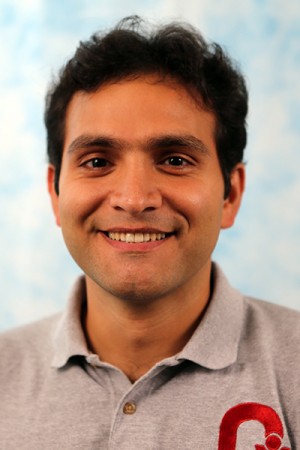
Carnegie Mellon University
Abstract:
There has been an increasing demand for applications that include aerial robots’ physical interactions with their environment, such as contact inspection, package pickup, and drilling. The demand has pushed the research groups towards new robot architectures and methods, but only limited research has been done to enable real-world applications. Fully-actuated multirotors were developed to simplify the physical interaction and simultaneous control of the robot’s motion and the wrench applied by the robot to the contact surface. While state-of-the-art methods have recently started addressing the simultaneous position and force control, no method has been introduced so far to show real-world tasks requiring full pose and wrench. This thesis proposes to push the boundaries of state-of-the-art by extending the research into full motion-wrench control and enhancing it with the real-world requirements, such as automating the pipeline from the motion-wrench tasks defined by the user to the task performed by the multirotor, and accounting for the environment alterations caused by multirotor’s applied wrenches.
We address three principal challenges of this problem. Firstly, we show that the current control methods for fully-actuated vehicles require a wide range of new tools to operate in the real world, limiting their integration into the real applications and significantly slowing their progress towards the full motion-wrench control tasks. We discuss how to alleviate this issue by leveraging the existing standard tools and extending the common firmwares to support the full motion-wrench control. Secondly, the new motion-wrench tasks and fully-actuated robots both have new sets of constraints and parameters, such as state and waypoint definitions and the robot’s operational profile. We analyze the operational profile of fully-actuated robots and propose task definition and trajectory planning methods that can leverage the profile and respect the task constraints to improve the performance and ensure the tasks’ feasibility. Finally, the current state-of-the-art methods do not consider the changes in the contact surface during the tasks. We propose using the direct wrench feedback and the indirect wrench estimation to estimate the changes and enhance the motion planning system with this information to account for the expected alterations and make better real-time decisions on how to finish the given task when the changes are unpredicted.
We evaluate our methods’ efficacy on a spectrum of tasks requiring full motion-wrench control in the real world. We expect that our work will enable aerial robots to be integrated into real applications requiring physical interaction with (semi-)rigid surfaces performed by non-expert users.
Thesis Committee Members:
Sebastian Scherer, Chair
Oliver Kroemer
Changliu Liu
Kostas Alexis, University of Nevada, Reno
